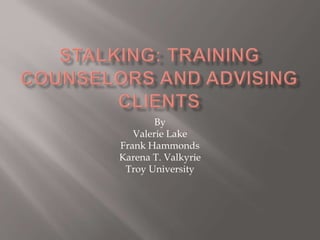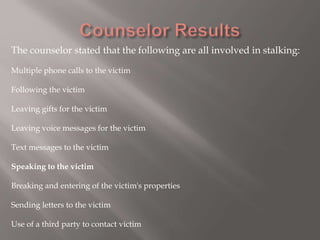The counselor showed good knowledge of stalking behaviors but overestimated the percentage of people stalked compared to national averages. Their advice to clients matched recommendations.
Twelve of thirty-eight students reported being stalked through threats, gifts, and fear. Behaviors included unwanted contact and property intrusion. Those contacting police were satisfied.
While the study provides insight, more counselor responses are needed to assess training-advice matching fully. Stalking experiences varied but included lasting mental impacts. Further research could better examine counseling practices and stalking impacts.


























